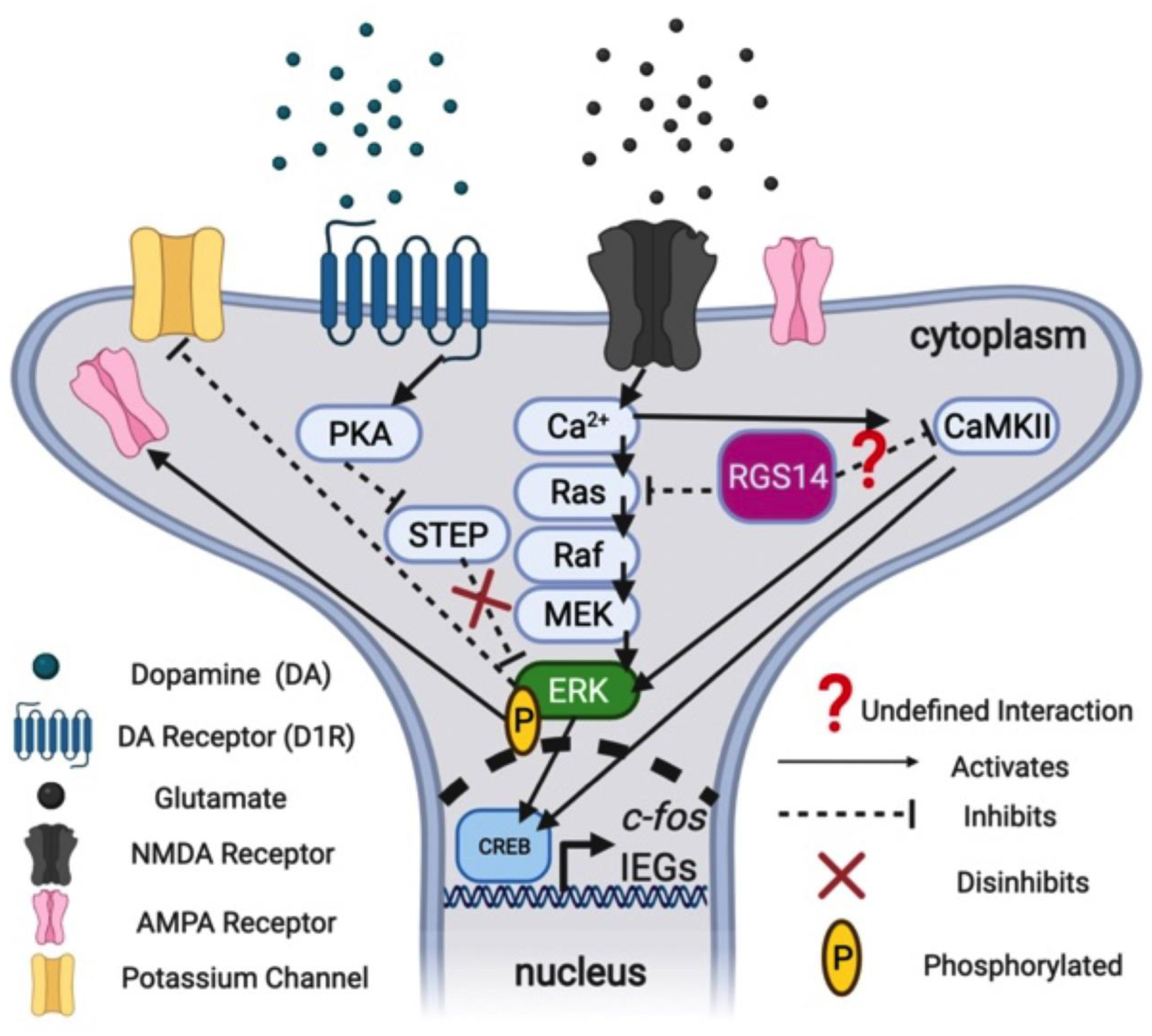Figure 6.

Proposed signaling model for RGS14-mediated suppression of cocaine-induced locomotion and gene expression. Phosphorylated ERK (pERK) is active and promotes rapid “cytoplasmic” effects by inactivating potassium efflux channels or increasing the insertion of ionotropic α-amino-3-hydroxy-5-methyl-4-isoxazolepropionic acid (AMPA) receptors for glutamate, as well as slower “nuclear” effects involving activation of the transcription factor cAMP response element-binding protein (CREB) and subsequent upregulation of activity-dependent immediate early genes (IEGs) like c-fos that are involved in synaptic plasticity. The protein STEP dephosphorylates pERK and inactivates it, but STEP itself is inactivated following PKA activation downstream of D1 receptor (D1R) stimulation by dopamine (DA). Thus, D1R activation by DA disinhibits pERK by inhibiting the phosphatase activity of STEP towards pERK. Similarly, RGS14 may act to suppress pERK signaling by inhibiting Ca2+-dependent signaling downstream of NMDAR stimulation via known interactions with Ca2+-activated Ras and undefined interactions with Ca2+-dependent kinases like Ca2+/calmodulin-dependent protein kinase II (CaMKII). These signaling interactions may occur either in the cytosol or in the nucleus, where RGS14 can shuttle. Created with BioRender.com.
